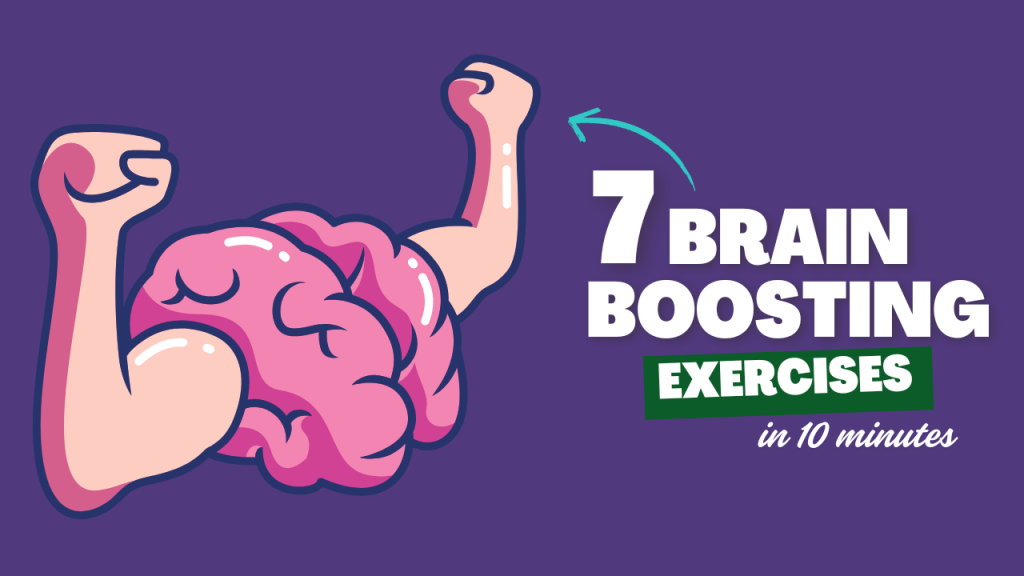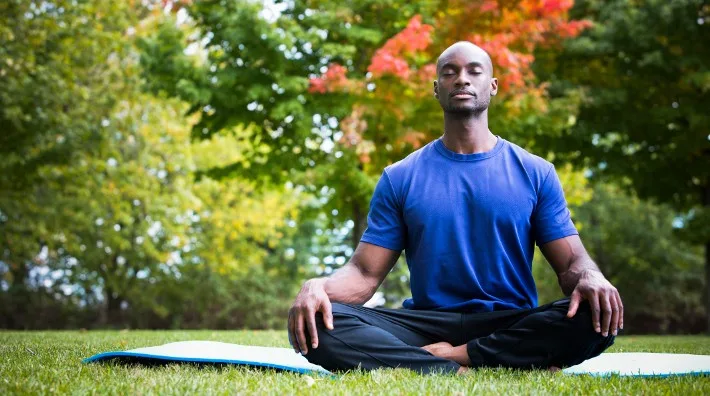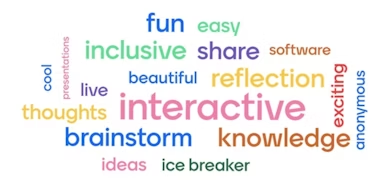Think your brain is stuck in slow gear?
Just like your body needs a quick stretch to stay agile, your brain needs a mental workout too—and the best part? You can sharpen your focus, memory, and creativity in less time than it takes to scroll your social feed. Science agrees: short bursts of cognitive activity can rewire your brain for sharper thinking—and these exercises take less than 10 minutes.
Let’s dive into 7 powerful brain boosting exercises that boost mental performance, whether you’re at home, at work, or in between Zoom meetings.

Do’s and Don’ts of Brain-Boosting Exercises
| Do’s | Don’ts |
|---|---|
| Do practice daily for consistency | Don’t expect instant miracles after one try |
| Do start with 1–2 exercises and build up | Don’t overwhelm your mind with too many at once |
| Do mix physical and mental exercises | Don’t rely only on passive activities like watching videos |
| Do focus fully during each session | Don’t multitask while doing brain exercises |
| Do track your mental progress over time | Don’t skip exercises because they seem too simple |
| Do pair brain training with healthy habits (sleep, diet) | Don’t ignore mental fatigue—rest is important too |
| Do challenge yourself gradually | Don’t repeat the same easy task every day |
What Can Happen After 30 Days of Brain-Boosting Exercises
| Area of Improvement | Expected Benefits After 30 Days |
|---|---|
| Memory | Improved short-term recall and faster information retention |
| Focus & Attention | Enhanced ability to concentrate and avoid distractions |
| Mental Clarity | Reduced brain fog and sharper thinking throughout the day |
| Emotional Balance | Lower stress levels and better emotional regulation |
| Cognitive Speed | Faster decision-making and quicker mental response time |
| Creativity | Increased idea generation and problem-solving capacity |
| Brain-Body Coordination | Improved movement accuracy and mental alertness through physical engagement |
| Self-Discipline | Better routine management and consistency in daily tasks |
1. The 4-Thing Recall Test (Memory Training)

Sit down for a moment. Look around and name 4 random objects. Close your eyes and try to recall their color, position, and shape. Now wait 5 minutes and recall them again—can you remember the details?
This quick exercise strengthens your short-term memory and trains your brain to focus on details.
Did You Know?
Memory athletes train using similar visual recall tricks—and most of them don’t have photographic memory. It’s all about practice!
2. Cross-Lateral Movements (Brain-Body Coordination)

Stand up and touch your right elbow to your left knee, then your left elbow to your right knee. Do this for one minute. Add speed without losing coordination.
Cross-lateral movement connects both brain hemispheres, improving communication between logic and creativity centers. It’s especially helpful before studying or brainstorming.
Myth Buster:
Many believe brain exercises must be complex. In reality, coordinated body movements are some of the most effective ways to stimulate your brain.
3. 5-Minute Meditation with Breath Awareness

Set a timer for 5 minutes. Close your eyes. Breathe in deeply through your nose, count to 4, hold for 4, and exhale slowly through your mouth for 4. Focus only on your breath.
This activates your prefrontal cortex, responsible for decision-making and emotional regulation. Plus, it reduces cortisol—your brain’s worst enemy.
Interesting Fact:
Just one session of focused breathing can increase brain oxygenation, leading to sharper focus and clarity.
4. Reverse Counting (Mental Flexibility)
Start from 100 and count backward in intervals of 7 (100, 93, 86, etc.). Or go from 200 backward in 3s.
It challenges your working memory and enhances cognitive flexibility—the ability to adapt your thinking to new rules or situations.
Try This Twist:
Do reverse math while walking around. Engaging both body and brain intensifies neuroplasticity.
5. Word Association Chain

Choose a word (like “tree”). Think of the first word that comes to mind (“leaf”), then the next (“green”), and so on. Try to go as far as possible in 2 minutes. Don’t pause.
This quick game trains creative thinking and word recall. It’s perfect for writers, speakers, and anyone who wants to think on their feet.
Did You Know?
This technique is often used by psychologists to assess emotional and subconscious responses.
6. Dual N-Back Game (Digital Brain Booster)
Use a free brain-training app that offers Dual N-Back tasks—a scientifically supported method to improve working memory and fluid intelligence. Do one 7-minute session.
Interesting Fact:
Studies show regular Dual N-Back training can improve IQ-related skills, including problem-solving and pattern recognition.
If you’re not into digital games, try remembering a spoken list of words while doing a separate task like solving a puzzle.
7. 3-Minute Visualization Challenge

Pick a location you know well—your kitchen, your childhood park, your office desk. Close your eyes and mentally walk through it. Try to “see” as many details as possible, including colors, objects, textures, and sounds.
Visualization is a core mental skill that boosts spatial memory and creativity. Athletes, entrepreneurs, and musicians use it to mentally rehearse success.
Myth:
Many assume visualization is only for artists or dreamers. In truth, it’s a practical brain tool used in business, sports, and education to improve results.
Final Thoughts
These quick but potent brain boosting exercises don’t require any special tools, money, or large time commitments—just your mind and a few spare minutes. With regular practice, they can sharpen your focus, reduce mental fog, and even improve long-term brain health.
Pro Tip: Choose 2 or 3 of these exercises daily and rotate them to keep your brain challenged and engaged.
Remember: just like your muscles grow with resistance, your brain thrives on challenge. And it all starts with just 10 minutes a day.
Frequently Asked Questions (FAQs)
Do brain exercises really work?
Yes, consistent brain exercises can improve memory, focus, mental agility, and even emotional regulation. Numerous studies support that mental workouts stimulate neuroplasticity—the brain’s ability to reorganize itself and form new connections.
How often should I do these brain exercises?
Ideally, aim for at least one or two brain exercises daily. Even doing 5–10 minutes a day can make a noticeable difference over time, especially when combined with good sleep, nutrition, and physical activity.
Are these exercises suitable for all age groups?
Absolutely. These exercises are designed for all ages—from teenagers to seniors. They’re safe, non-invasive, and can be easily tailored to suit different attention spans and cognitive levels.
Can these exercises help with anxiety or stress?
Yes. Techniques like breath awareness, visualization, and meditation not only boost brain function but also lower stress and anxiety by calming the nervous system and improving emotional regulation.
Do I need any tools or apps to get started?
No special equipment is required. However, for exercises like the Dual N-Back game, a free app or website may be helpful. The rest can be done with just your mind, a quiet space, and a few minutes of time.
How soon can I expect results?
While some mental clarity and focus may improve after just one session, long-term benefits such as enhanced memory, problem-solving, and mood regulation usually show after consistent practice for several weeks.
Are these exercises effective for students or professionals?
Definitely. Students can use them to improve memory retention and focus, while professionals can benefit from better decision-making, creativity, and mental stamina.






Very good